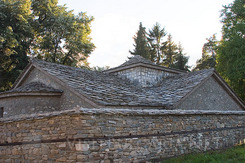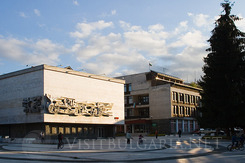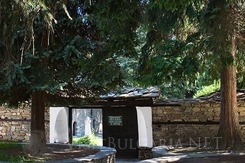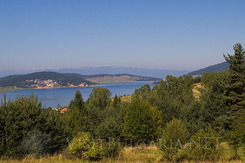Over one billion euro has been invested in the wellness and spa industry in Bulgaria over the past more...
| Search | Hotels / Accommodation | Vacations | Tours & Trips | Rent A Car | Transport | Flights | Conferences | Press Centre | Yachting |
- Hotels & Accommodation in Batak



- Spa Hotel Hebar
- Batak Guide
- Early booking in Batak
- All inclusive in Batak
- Last minute in Batak
- Hotels in Batak
- Apartments in Batak
- Villas in Batak
- Rural houses in Batak
- Vacations in Batak
- Transport To Batak
- Tours in Batak
- Conferences in Batak
- Articles on Batak
- News From Batak
- Holidays in Bulgaria
- All inclusive
- Beach
- Birdwatching
- Golf
- Health
- History
- Hunting
- Monasteries/ Religious
- Mountain biking
- Prom
- Rural
- Ski
- Spa & Wellness
- Trekking
- Water sports
- Weekend breaks
- Wine
- Conference
- Children Holidays
- Yachting
- Events
- Type of accommodation
- Hotels
- Apartments
- Villas
- Rural houses
- Destinations
- Aheloy
- Ahtopol
- Albena
- Apriltsi
- Arbanassi
- Asparuhovo
- Assenovgrad
- Bachkovo Monastery
- Balchik
- Bankya
- Bansko
- Banya (Karlovo)
- Banya (Razlog)
- Batak
- Beklemeto
- Belchin Bani
- Beli Iskar
- Belogradchik
- Berkovitsa
- Blagoevgrad
- Bodrost
- Bojichen
- Borovets
- Botevgrad
- Bourgas
- Bozhentsi
- Bratsigovo
- Brestovitsa
- Buzludja
- Byala
- Chepelare
- Cherepish Monastery
- Chernomorets
- Chiflik
- Devin
- Dimitrovgrad
- Dobarsko
- Dobrich
- Dobrinishte
- Dolna Banya
- Dospat
- Dryanovo
- Dupnitsa
- Dyuni
- Elena
- Elenite
- Elhovo
- Gabrovo
- Gela
- Golden Sands
- Gorna Oryahovitsa
- Gotse Delchev
- Govedartsi
- Grand Hotel Varna
- Harmanli
- Haskovo
- Haskovo Mineral Baths
- Hissarya
- Ivaylovgrad
- Kalofer
- Kamchia
- Kamen Bryag
- Kardjali
- Karlovo
- Kavarna
- Kazanlak
- Kiten
- Kom
- Koprivshtitsa
- Kosharitsa
- Kostenets
- Kostenkovtsi
- Kotel
- Kovatchevitsa
- Kranevo
- Kresna
- Kulinoto
- Kyustendil
- Lom
- Lovech
- Lozenets
- Lukovit
- Lyaskovets
- Madara
- Malko Tarnovo
- Malyovitsa
- Melnik
- Mezdra
- Momchilovtsi
- Montana
- Narechen Baths
- Near Golden Sands
- Nessebar
- Obzor
- Ognyanovo
- Osogovo
- Pamporovo
- Panagyurishte
- Panichishte
- Parshevitsa
- Pavel Banya
- Pavlikeni
- Pazardjik
- Pernik
- Petrich
- Pirdop
- Pleven
- Pliska
- Plovdiv
- Pomorie
- Pravets
- Preslav
- Primorsko
- Ravda
- Razgrad
- Razlog
- Ribaritsa
- Rila Monastery
- Riviera
- Rousse
- Rusalka
- Samokov
- Sandanski
- Sapareva Banya
- Semkovo
- Sevlievo
- Shabla
- Shipka
- Shipkovo
- Shiroka Laka
- Shkorpilovtsi
- Shoumen
- Silistra
- Sinemorets
- Sliven
- Smolyan
- Sofia
- Sopot
- Sozopol
- Srebarna
- St. Constantine & Elena
- Stara Zagora
- Starozagorski Baths
- Sunny Beach
- Sunny Day
- Sveti Vlas
- Svilengrad
- Svishtov
- Targovishte
- Teteven
- Tran
- Trigrad
- Troyan
- Tryavna
- Tsarevo
- Tsigov Chark
- Uzana
- Varna
- Varshets
- Veliko Tarnovo
- Velingrad
- Vidin
- Vitosha
- Voneshta Voda
- Vratsa
- Vratsata Gorge
- Yagoda
- Yakoruda
- Yambol
- Zlatitsa
- Zlatograd
- Bulgaria Guide
- General information
- Bulgarian Monasteries
- SPA Bulgaria
- The Black sea
- History
- Geography
- Maps
- Weather
- Airports in Bulgaria
- Webcams
- Forums
- Mountains in Bulgaria
- The Balkan Mountain Range
- Rila Mountain
- Pirin Mountain
- The Rodope Mountain
- Vitosha Mountain
- Travel Arrangements
- Visit Bulgaria
- Visa Requierments
- Choose Destination
- Flights to Bulgaria
- Transport in Bulgaria
- Advice
- Currency
- Official Holidays
Subscribe to newsletters to receive our hottest offers:
| Home > Pazardjik > Batak |
Batak

Location: Batak is a small town huddled among the northern foothills of Batashka Mountain in the Western Rodope Mountain. It is 156 km southeast of Sofia and 35 km south of the district town of Pazardjik. Batak is one of the symbols of the Bulgarian struggle for liberation.
 History: The archaeological finds are an evidence that the region was settled since the Antiquity. The settlement, named Batak, was mentioned in documents of the 16th century. Many Bulgarians from the local villages tried to escape the forcible conversion the Moslem faith and settled Batak. In the beginning of 19th century Batak was a big and prosperous settlement. The timber industry was the main occupation of its citizens and there were many timber workers and timber mills in the town. The stock breeding was also developed in Batak. In 1813 the church “St. Nedelya” was built. The temple became one of the most tragically and sacred sites in Batak and Bulgaria. The town school opened its doors in 1835.
History: The archaeological finds are an evidence that the region was settled since the Antiquity. The settlement, named Batak, was mentioned in documents of the 16th century. Many Bulgarians from the local villages tried to escape the forcible conversion the Moslem faith and settled Batak. In the beginning of 19th century Batak was a big and prosperous settlement. The timber industry was the main occupation of its citizens and there were many timber workers and timber mills in the town. The stock breeding was also developed in Batak. In 1813 the church “St. Nedelya” was built. The temple became one of the most tragically and sacred sites in Batak and Bulgaria. The town school opened its doors in 1835.
 After the ferocity suppression of the April uprising in 1876, Batak became a symbol of Bulgarian martyrdom and self-sacrifice in the name of freedom. 5000 people were ruthlessly killed by the Ottoman hordes, known as bashi-bazouk, in a very mean way. The rich people from Batak went to the Ottoman army to hand down their weapon. The enemy pretended to accept the surrender but when the Bulgarians left without weapon the Ottomans invaded the town. Men and children were slaughtered instantly and the women were raped and then killed. About 2000 men, women and children managed to hide in “St. Nedelya” church. But the temple was too small and many of them suffocated. There was no water in the church so the survivors drank the blood of the dead. The women dug the floor of the church with their hands to find underground water for the children. After 3 days of siege the Bulgarians opened the doors of the church. The ottomans rushed and killed them momentarily. About 300 people left alive to meet the Liberation of Bulgaria in 1878.
After the ferocity suppression of the April uprising in 1876, Batak became a symbol of Bulgarian martyrdom and self-sacrifice in the name of freedom. 5000 people were ruthlessly killed by the Ottoman hordes, known as bashi-bazouk, in a very mean way. The rich people from Batak went to the Ottoman army to hand down their weapon. The enemy pretended to accept the surrender but when the Bulgarians left without weapon the Ottomans invaded the town. Men and children were slaughtered instantly and the women were raped and then killed. About 2000 men, women and children managed to hide in “St. Nedelya” church. But the temple was too small and many of them suffocated. There was no water in the church so the survivors drank the blood of the dead. The women dug the floor of the church with their hands to find underground water for the children. After 3 days of siege the Bulgarians opened the doors of the church. The ottomans rushed and killed them momentarily. About 300 people left alive to meet the Liberation of Bulgaria in 1878.
 This cruel act of violence left in history as Batak slaughter. It was noticed by some of the most famous writers, journalists and public figures. Victor Hugo, William Gladstone, John Mcgahan, Dostoefski and Tolstoy gave an expression of their protest and indignation against the Ottoman cruelty.
This cruel act of violence left in history as Batak slaughter. It was noticed by some of the most famous writers, journalists and public figures. Victor Hugo, William Gladstone, John Mcgahan, Dostoefski and Tolstoy gave an expression of their protest and indignation against the Ottoman cruelty.
Landmarks: The historical stone church “St. Nedelya” was turned into a museum and ossuary. It steel keeps the memory of those fearsome times. The museum of history is arranged in a modern building in the centre of the town. There are several restored houses, from the Revival period, which are also remarkable spots of interest.
 Vicinities: Batak dam is 3 km northwest of the town. It is one of the biggest artificial lakes in Bulgaria and it is extremely beautiful. The mountain resort Tsigov Chark is situated at the shores of the dam. There are ski piste and lift, and the resort is a perfect site for the entry level skiers during the winter. Many cosy hotels, villas, taverns and restaurants are waiting for the visitors in any time of year. Batak dam is a real paradise for the keen fishers, mountaineers and nature lovers.
Vicinities: Batak dam is 3 km northwest of the town. It is one of the biggest artificial lakes in Bulgaria and it is extremely beautiful. The mountain resort Tsigov Chark is situated at the shores of the dam. There are ski piste and lift, and the resort is a perfect site for the entry level skiers during the winter. Many cosy hotels, villas, taverns and restaurants are waiting for the visitors in any time of year. Batak dam is a real paradise for the keen fishers, mountaineers and nature lovers.
Glolyam and Malak Beglik dams, Shiroka polyana (Wide meadow) dam and Toshkov chark dam are also unique sites near Batak, located in the heart of the magnificent Rodope Mountain.
































